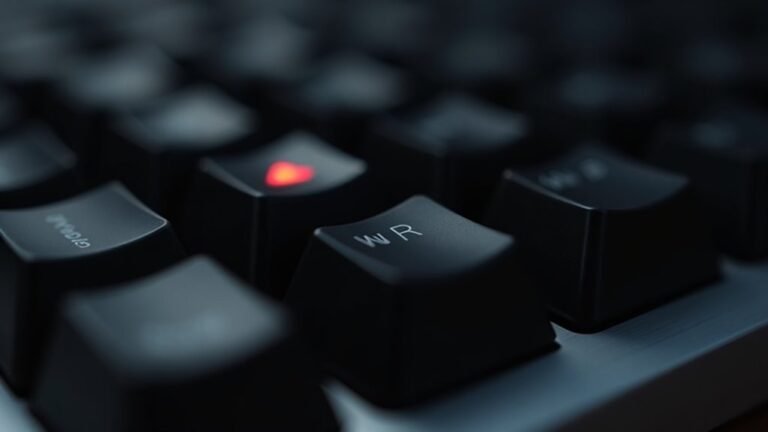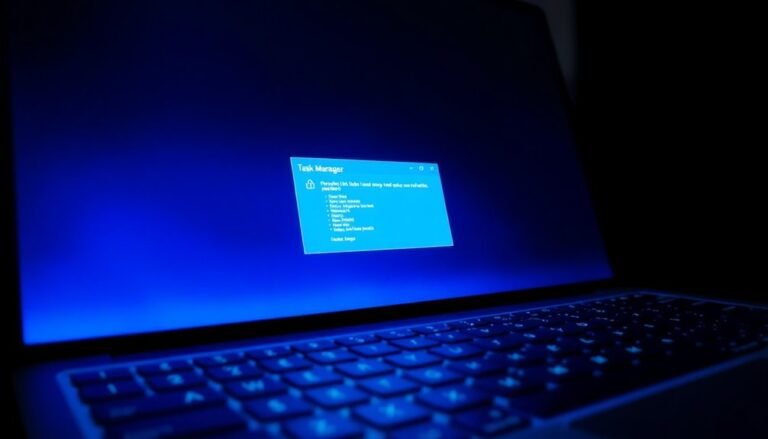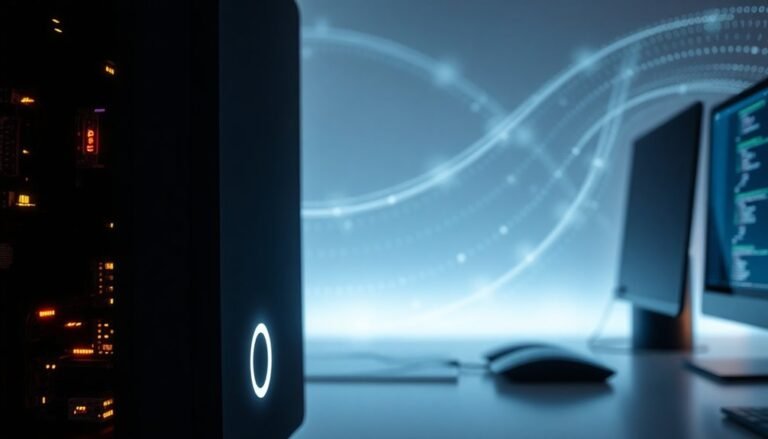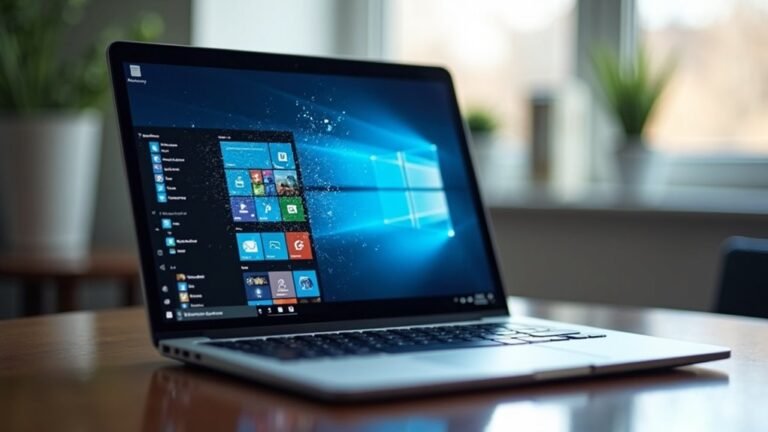Speed up Windows With One Command: Quick Performance Fix
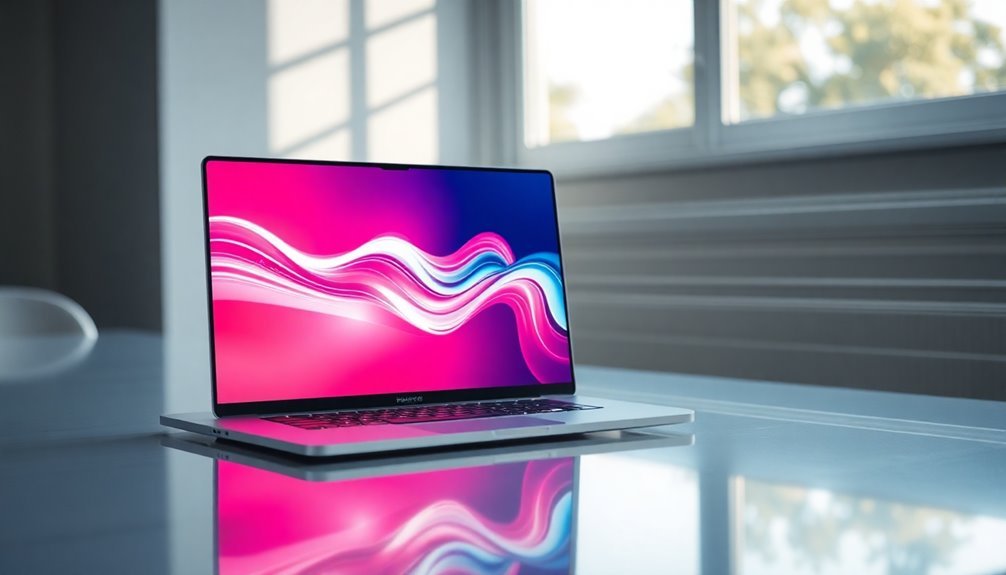
To quickly speed up your Windows PC, open Command Prompt as administrator and run `chkdsk C: /f /r /x`. This command scans your system drive, finds and repairs disk errors, and recovers bad sectors that can slow you down.
You may be prompted to schedule the scan for the next reboot. It’s a solid troubleshooting fix that often leads to noticeable improvements.
There are more effective steps if you’re aiming for even faster, smoother performance.
Repair Disk Errors and Bad Sectors Instantly

How to Repair Disk Errors and Fix Bad Sectors on Windows PC Fast
Is your Windows PC running slowly or are files suddenly inaccessible? Disk errors and bad sectors could be the root cause. You can quickly repair these issues using the powerful CHKDSK command. Here’s a step-by-step guide to help you fix disk problems and improve your computer’s performance.
Step 1: Open Command Prompt as Administrator
Type “cmd” in the Windows Start menu search bar. Right-click on “Command Prompt” and select “Run as Administrator” to open the elevated command prompt window.
Step 2: Run CHKDSK to Scan and Repair Disk Errors
In the command prompt, type:
`chkdsk C: /f /r /x`
Replace “C:” with the letter of the drive you want to fix. This command will scan for file system errors, locate bad sectors, recover readable information, and dismount the drive if necessary.
Step 3: Schedule Disk Check on Reboot (if needed)
If the drive is currently in use, CHKDSK will prompt you to schedule the scan on your next system restart. Type “Y” and press Enter, then reboot your PC to start the repair process.
Step 4: Wait for the CHKDSK Process to Complete
The duration depends on your disk size and error severity. It can take from a few minutes to several hours. After completion, a detailed report will show what errors were found and fixed. You can review the results and chkdsk logs using the Event Viewer or PowerShell for a more detailed summary of what was detected and repaired.
Why Use CHKDSK Regularly?
Running CHKDSK routinely helps prevent slowdowns, file corruption, and system crashes by maintaining disk health. It’s a valuable tool to keep your Windows PC running smoothly.
Important Tips:
- Always back up your important data before running disk repairs to avoid accidental data loss.
- Use CHKDSK on external drives and USB drives to maintain their integrity as well.
Defragment Your Drive for Faster Access
How to Defragment Your Hard Drive for Faster Windows PC Performance
Defragmenting your hard drive is one of the most effective ways to speed up your Windows PC. Over time, file fragmentation occurs when data is broken into scattered pieces across your disk. This fragmentation forces your hard drive’s read/write head to work harder, increasing load times and causing slower program launches and overall system sluggishness.
By defragmenting your drive, you consolidate fragmented files into continuous blocks, which allows Windows to access data faster. This leads to quicker boot-up times, faster file access, improved application responsiveness, and shorter game loading times.
To defragment your hard drive in Windows, use the built-in Disk Defragmenter tool or the command-line utility Defrag.exe for advanced options. Ensure you have at least 15% free disk space before starting the defragmentation process for optimal results. Defragmentation not only reduces mechanical wear by minimizing the movement required of your hard drive’s internal parts, but also helps the drive avoid bad sectors that could damage your data.
Regularly defragmenting your drive not only enhances PC speed but also reduces mechanical wear on your hard drive, extending its lifespan and lowering the risk of hardware failure.
Additionally, well-defragmented drives improve backup efficiency and system stability, keeping your Windows PC running smoothly and reliably.
Start defragmenting your hard drive today to boost your computer’s performance and enjoy a faster, more responsive Windows experience.
Remove Bloatware With a Single Script
How to Remove Bloatware on Windows with a Single PowerShell Script
After optimizing your drive for faster performance, the next step to speed up your Windows PC is removing bloatware. Pre-installed apps, OEM utilities, and trial software often consume system resources, slow down responsiveness, and clutter your device.
Using a PowerShell script to remove bloatware efficiently and automatically is the best solution—just run the script as Administrator.
Top PowerShell scripts for bloatware removal let you customize which apps to uninstall, including Microsoft apps like Cortana and Xbox services, as well as third-party OEM software and trialware.
These scripts use whitelists to protect critical system apps and include validation checks to minimize errors during removal.
For IT professionals managing multiple devices, deploying these scripts silently or in Audit mode before user accounts are created ensures streamlined mass removal.
Most scripts generate detailed logs stored in the C:ProgramDataDebloat folder for troubleshooting purposes. Additionally, registry cleanup steps help remove leftover entries completely.
If you want a safer approach, choose scripts that allow you to disable bloatware instead of fully uninstalling it, or that offer rollback features.
Removing bloatware frees up disk space, reduces background processes, and improves privacy by disabling telemetry and data collection services.
Implementing a reliable PowerShell script to remove Windows bloatware is an effective way to boost your PC’s speed, enhance system responsiveness, and maintain better control over your device.
Optimize Prefetch and Startup Delays
Optimize Windows Prefetch and Reduce Startup Delays for Faster Boot Times
Windows automatically manages prefetch files to enhance application launch speeds and reduce boot times. These prefetch files, stored in the Windows Prefetch folder, cache essential data for frequently used apps, helping your system load programs more quickly.
While it’s tempting to delete prefetch files manually, it’s best to avoid this as Windows efficiently prunes them to maintain optimal performance. Instead, focus on proven system tweaks to boost startup speed and overall responsiveness.
Follow these expert tips to safely optimize prefetch and minimize startup delays on your Windows PC:
- Speed Up Menu and Explorer Loading: Use the Registry Editor (Regedit) to adjust the `MenuShowDelay` and `EnableXamlStartMenu` values. Lowering `MenuShowDelay` reduces the delay before menus appear, while tweaking `EnableXamlStartMenu` helps speed up the Start menu experience.
- Regularly Clean Temporary Files: Utilize the built-in Disk Cleanup tool or run `%temp%` from the Run dialog to safely delete temporary files. This process frees up disk space without affecting prefetch data.
- Disable Unnecessary Startup Programs: Open Task Manager and navigate to the Startup tab to identify programs that launch at boot. Disabling unneeded applications can significantly reduce startup time and improve system responsiveness.
By implementing these Windows optimization techniques, you can enjoy faster boot times, quicker application launches, and a more efficient computing experience.
Keep your PC running smoothly with these simple yet effective prefetch and startup delay optimizations.
Boost Performance With Power and Graphics Tweaks
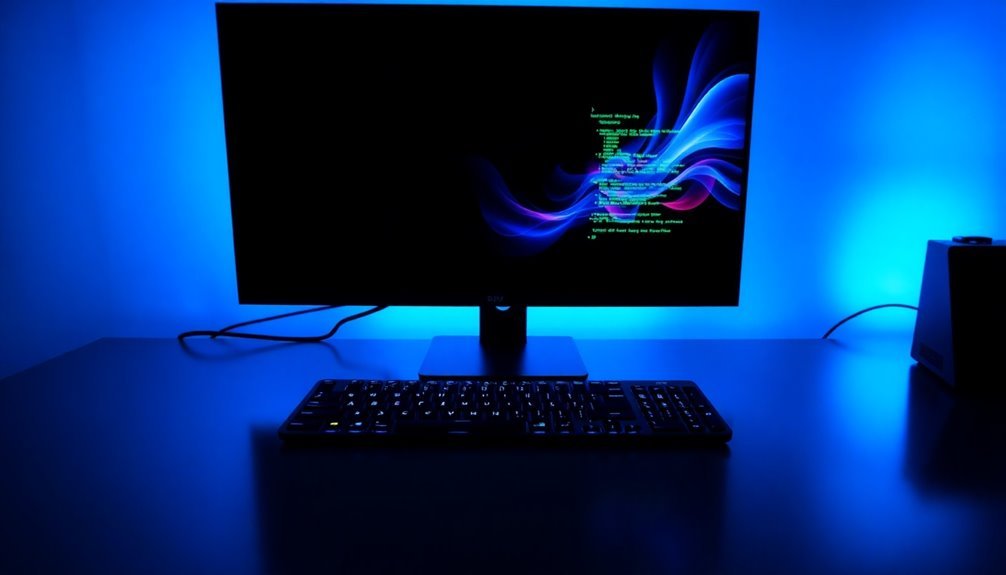
Boost Your PC Performance with Power and Graphics Optimization
To enhance your computer’s speed and responsiveness, start by opening Windows Graphics Settings and assigning the High Performance GPU to resource-intensive applications.
Next, disable unnecessary visual effects via System Properties > Performance Options to reduce GPU workload and improve efficiency.
Keep your graphics drivers up to date to ensure optimal compatibility and faster performance.
Additionally, configure your GPU’s control panel to set power management to maximum performance mode.
Finally, increase your display refresh rate to the highest supported setting for smoother visuals and minimized input lag.
These power and graphics tweaks will significantly boost your PC’s overall performance.
Clear Out Temporary and Cached Files
How to Clear Temporary and Cached Files to Speed Up Your PC
Optimizing power and graphics settings can only do so much if your Windows PC is slowed down by accumulated temporary and cached files. These files quickly build up from system updates, web browsing, and regular operations, often causing slow startups, lagging apps, and even Task Manager glitches or system crashes.
Clearing out these unnecessary files is a proven way to boost your PC’s speed and improve system stability.
Follow these effective methods to clear temp and cached files on Windows:
- Manually Delete Temp Files: Navigate to `C:Users[YourUsername]AppDataLocalTemp`, select all files, and delete them. This manual cleanup is safe and instantly frees up disk space.
- Enable Windows Storage Sense: Go to Settings > System > Storage and turn on Storage Sense. Configure it to run automatically on a schedule to keep temporary files under control without manual effort.
- Clear Your Browser Cache: Access your browser settings and clear cached data regularly. Removing this cached content helps prevent browser slowdown and improves overall responsiveness.
Regularly clearing temporary and cached files not only enhances your PC’s performance but also helps protect your privacy by removing sensitive stored data.
Make it a habit to maintain a faster, cleaner, and more secure Windows environment.
Maintain Essential Free Space for Speed
Optimize Your Windows PC Speed by Maintaining Essential Free Disk Space
If your Windows PC is running low on disk space, you may experience slow performance, update errors, or app crashes. To keep your system running smoothly and fast, always maintain at least 15-20% free space on your primary drive.
When free space drops below 10-15%, Windows struggles to manage virtual memory and temporary files, causing slowdowns and disk fragmentation.
Boost your PC speed by moving large personal files like videos and photos to a secondary drive or cloud storage solutions such as OneDrive or Google Drive.
Adjust Windows Storage settings to change default save locations, keeping your system drive clutter-free. Manage System Restore Points by setting a smaller maximum size (2-5% of disk space) and regularly deleting outdated restore points to free up space.
If you don’t use hibernation, disable it using the command `powercfg /hibernate off` to reclaim several gigabytes of disk space.
Enable Storage Sense in Windows Settings to automate the cleanup of temporary files and optimize free space effortlessly.
Following these expert tips ensures your Windows PC maintains the essential free disk space needed for peak performance and faster speeds.
Monitor and Optimize System Resources
Monitor and Optimize System Resources for Peak Windows Performance
Maintaining ample free disk space is essential, but monitoring your system’s resource usage is equally important for optimal Windows performance. Use the built-in Resource Monitor tool to track CPU, memory, disk, and network usage in real time. Simply type `resmon` in the Start menu search to open this powerful utility and get a detailed view of resource consumption.
Identifying and addressing resource-heavy processes can significantly improve your PC’s speed and responsiveness.
Follow these expert steps to monitor and optimize your Windows system resources effectively:
- Identify Resource Hogs in Windows: Navigate through the CPU, Memory, Disk, and Network tabs in Resource Monitor to spot processes with high resource usage. End or adjust non-essential tasks to free up resources.
- Detect Memory and Disk Bottlenecks: Watch for indicators like hard faults per second, high disk queue lengths, or increasing memory consumption. These signs point to insufficient RAM or disk I/O issues that can slow down your system.
- Resolve Network Performance Issues: Use the Network tab to uncover bandwidth-heavy or unauthorized applications that may be impacting your internet speed. Close or limit these programs to enhance network performance.
Regularly monitoring and optimizing your system resources helps maintain smooth and efficient Windows performance. Stay proactive with Resource Monitor to keep your PC running at its best.
Keep Drivers and Windows Updated Efficiently
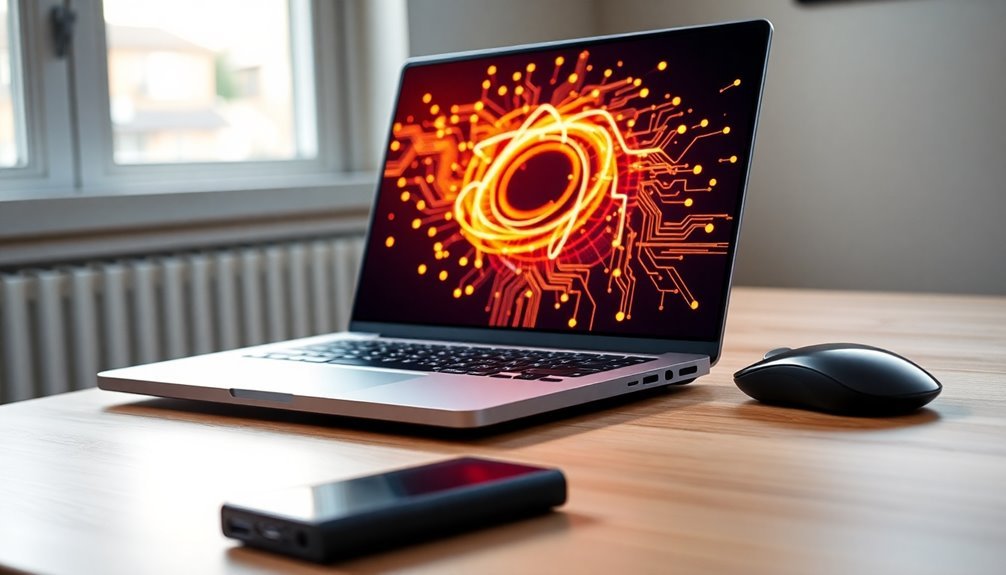
How to Keep Drivers and Windows Updated for Optimal PC Performance
Keeping your Windows operating system and device drivers up to date is crucial for system stability, compatibility, and peak performance. Windows automatically installs many updates, but to ensure you get all the latest drivers and system improvements, follow these effective steps.
Enable Automatic Driver and Windows Updates
First, enable automatic updates to keep your PC current. Go to Control Panel > Device Installation Settings and select the option to allow Windows to download driver software automatically.
Then, open Windows Update settings, navigate to Advanced Options, and turn on “Receive updates for other Microsoft products.” This ensures you receive all essential updates, including optional driver upgrades.
Manually Check for Driver Updates in Windows Update
Regularly check Windows Update for new updates and pay special attention to the Optional Updates section, where non-critical driver updates are listed. Installing these can improve device functionality and fix hardware issues.
Update Device Drivers via Device Manager
If you experience hardware problems or need the latest features, open Device Manager, right-click the problematic device, and select “Update driver.” Allow Windows to search online for the latest drivers. This method helps quickly resolve driver-related issues.
Download Drivers from Manufacturer Websites
For specialized hardware or when Windows doesn’t find the latest drivers, visit the device manufacturer’s official website. Download drivers that exactly match your Windows version and hardware model to avoid compatibility problems.
Backup and Restart After Updates
Always back up your important data before updating drivers to prevent data loss. After installing any driver or system updates, restart your PC to complete the installation process and avoid conflicts caused by incomplete updates.
Frequently Asked Questions
Will These Commands Affect My Personal Files or Documents?
These commands typically don’t touch your personal files or documents. Stick to default options, avoid selecting user folders like Downloads, and always review prompts before confirming. Make a backup first if you’re unsure, especially when running scripts as administrator.
Is It Safe to Use These Tweaks on Laptops and Tablets?
Picture your device as a well-tuned engine—some tweaks are safe, like disabling startup apps or cleaning disk space. Don’t disable security features or antivirus; always back up data before changes to prevent losing important files.
Can I Automate These Performance Commands to Run Regularly?
Yes, you can automate these performance commands using Task Scheduler or PowerShell scripts. Make sure scripts run with admin rights, test for conflicts, and set restore points. Review logs and update tasks regularly after Windows updates.
Do These Commands Work on Windows 11 or Just Windows 10?
You can use most performance commands on both Windows 10 and 11 with the same syntax. However, some commands target Windows 11-only features, so always check your OS version and command compatibility before running them.
What Should I Do if My System Becomes Unstable After Applying a Command?
If your system starts acting like it’s haunted by gremlins, first restore your system point, then run `sfc /scannow` and `DISM /RestoreHealth`. If issues persist, boot Safe Mode, undo changes, or seek expert help.
Conclusion
By following these quick fixes, you’ll have Windows running smoother than ever—no need to reinvent the wheel. Just tackle each step, from cleaning up files to tuning power settings, and you’ll notice a real difference. If you hit a snag, retrace your steps and double-check each command for typos or missed prompts. Keep these strategies handy, and you’ll always be ready to put your PC back on the fast track when it slows down.
